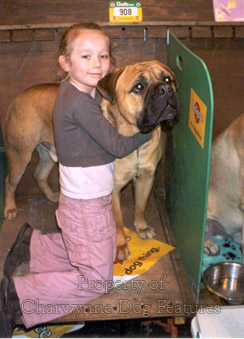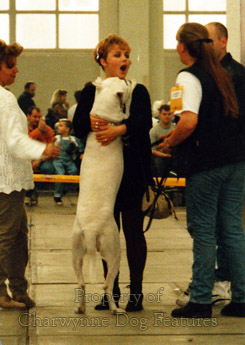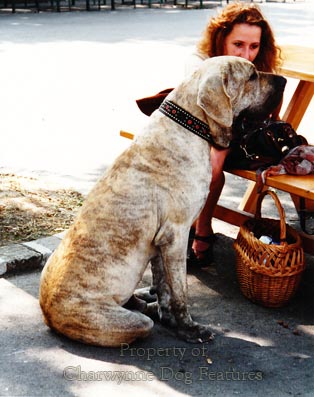562 Pedigrees in Peril
PEDIGREES IN PERIL
by David Hancock

 In his valuable two-volume The Dog Book of 1906, the under- rated Scottish writer, James Watson, describes quite scathingly those in the world of purebred dogs who fail to realise that a pedigree is only a piece of paper. He records a conversation with the great Irish Terrier breeder of one hundred years ago, William Graham, who cast his eye over a show entry of his time and declared: 'Some men show pedigrees; I show dogs and take the prizes.' Vero Shaw, the distinguished canine authority of that time, gave the view in a show report that, all too often, the pedigree was worth more than the dog. And to this day, you still hear an indifferent animal excused on the grounds that it 'has a good pedigree'. As James Watson observed: 'No one with any knowledge of the subject will breed to a dog merely on pedigree.. .a good dog makes a pedigree good, and not the other way.'
In his valuable two-volume The Dog Book of 1906, the under- rated Scottish writer, James Watson, describes quite scathingly those in the world of purebred dogs who fail to realise that a pedigree is only a piece of paper. He records a conversation with the great Irish Terrier breeder of one hundred years ago, William Graham, who cast his eye over a show entry of his time and declared: 'Some men show pedigrees; I show dogs and take the prizes.' Vero Shaw, the distinguished canine authority of that time, gave the view in a show report that, all too often, the pedigree was worth more than the dog. And to this day, you still hear an indifferent animal excused on the grounds that it 'has a good pedigree'. As James Watson observed: 'No one with any knowledge of the subject will breed to a dog merely on pedigree.. .a good dog makes a pedigree good, and not the other way.'
There used to be a saying in dog breeding circles: No animal is wel1-bred unless it is good in itself. I haven't heard it spoken off as a received wisdom for some years. Much more important than the names on the written pedigree is the ability to 'read' it, translate the names into physical content. As the great Scottish Terrier breeder, WL McCandlish wrote in his book on the breed: 'The names in a pedigree form are merely cyphers, designating certain groupings of features and certain sources of blood, and pedigree is of no value unless the breeder can translate what these cyphers mean.' Yet even some quite experienced dog breeders get dazzled by names on forms, rather than by dogs, supported by blood from distinct ancestors. The eminent canine geneticist Malcolm Willis has written: 'Never does pedigree information become more important than information on the dog itself.' We must always value dogs that are good in themselves.

In the pedigree dog world, much is made of the stud dog of the year competition, which is entirely based on the show success of the progeny of often over-used sires. The progeny of such successful sires could have bitten children, savaged other dogs or died young of some inheritable disease. Is this truly the best we can do? Does this, as the leitmotiv of the KC puts it, improve dogs? When I was working in Germany nearly half a centuryago, I learned of the work, in the German Democratic Republic, from a book by Dr FK Dorn, entitled Hund und Umwelt or Dog and the World Around Him i.e. his Environment. Dorn devised a system of four categories: A=Type, B=Appearance, C=Conformation and D=Temperament. Within each category, Dorn devised a numerical scoring system, in which, for example, Al=shelly, A8=too heavy and clumsy; BO=lack of pigmentation, B5=excellent appearance, outline and symmetry; DO= nervous or timid, D3=cautious, not self-assured and D8= unafraid but not aggressive. Such details could then be written on a dog's pedigree for use when breeding plans were being formulated. 
This became known as the Merseberg scoring system, after the GSD breed club there. Dorn was seeking to establish a clear picture of the hereditary qualities of the whole bloodline of a dog. But now, half a century later, our pedigrees merely list the ancestors for five generations, without any checks on their accuracy or the slightest whiff of real information about the dog. Is this progress? Is this in the best interests of good breeding? Prizes for phenotype and beauty are given sole weight and to hell with such basic information as health, intelligence and working ability. In livestock breeding, a stud has no value until the performance of its progeny has been established. But in the pedigree dog world, a stud is valued not on the performance of its offspring but on their imposing stance in the ring. Does that produce the best companion animals? The KC's self-imposed mandate is the improvement of dogs, not the improvement of show dogs. Is their remit being met? Have we truly progressed in the last century or so?
When are we going to stop valueing our precious breeds of dog on their appearance alone, when it's their temperament which makes them a successful companion animal? Breeding for the pedigree and show-ring success is not the activity of either a real dog-lover or a true breed-lover; it can become a hobby for the mindless pursuit of winning for winning's sake, and it ruins distinguished breeds. In one half-century the Alsatian is renowned for its level topline, in the next it is desired to feature a 'banana-back' with its tail dragging along the floor. Such specimens may have great pedigrees, but they are not great dogs. Genuine dog-lovers know the difference! A Bulldog which cannot breathe freely or give birth naturally may have an impressive pedigree but will never be an impressive dog. Sound dogs impress; unsound ones just suffer -in silence. Their pedigree never speaks!